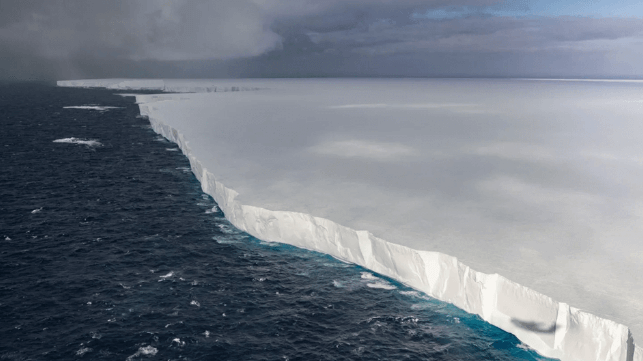The World’s Largest Iceberg Drifting Towards South Georgia
Iceberg A23a, the world’s largest iceberg, is slowly making its way towards the island of South Georgia, posing potential threats to local wildlife and maritime activities.
With an impressive size of 1.1 million acres, A23a is approximately 75 times larger than Manhattan and weighs about one trillion tonnes. It broke off Antarctica’s Filchner-Ronne Ice Shelf in 1986 and has been drifting ever since, finally reaching the Antarctic Circumpolar Current in April 2024.
Despite initial expectations of melting in warmer waters, A23a stalled in the South Orkney Islands, only to break free and head towards South Georgia, now just 180 miles away. This massive iceberg’s arrival could have significant consequences for the island’s ecosystem.
Potential Impacts on Wildlife and Maritime Activities
As A23a approaches South Georgia, concerns arise regarding its potential hazards to local wildlife, particularly King penguins and seals. The iceberg’s presence could obstruct access to the water from breeding grounds, creating challenges for these species.
Moreover, the iceberg poses a threat to maritime activities, as it may block rugged beaches and impede vessel traffic, primarily consisting of fishermen. Previous experiences with megabergs reaching the island have caused navigational difficulties for fishing vessels, requiring them to navigate through a sea of giant ice blocks.
Andrew Newman from fishing company Argos Froyanes described the situation, stating, “It is in bits from the size of several Wembley stadiums down to pieces the size of your desk,” highlighting the challenges faced by commercial navigation in the area.
Despite potential disruptions, Mark Belchier, director of fisheries and environment for the government of South Georgia, reassured that any impacts on wildlife from beach obstructions would be “highly localized and transient.”
Conclusion
The impending arrival of iceberg A23a at South Georgia raises concerns for local wildlife and maritime activities. As this colossal iceberg continues its journey towards the island, efforts to mitigate potential impacts on the ecosystem and vessel traffic are crucial. Monitoring and strategic planning will be essential to address the challenges posed by the presence of this massive natural phenomenon.

